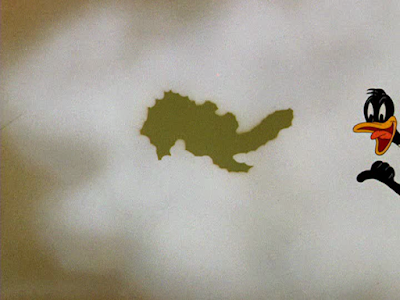Not too many people can say their TV show was cancelled after one broadcast. Henry Morgan could.
Morgan was a caustic wit who didn’t put up with a lot of stupidity. Unfortunately broadcasting is sometimes loaded with stupidity and Morgan found himself bouncing around a lot before being plunked into the panel of the quiz show
I’ve Got a Secret. Morgan had some brief TV ventures but none so brief as his job hosting “So You Think You Know Music.”
The show was the brainchild of Ted Cott, an executive with the Du Mont network before moving over the NBC TV. He created it on radio for CBS in 1939. Early network TV grabbed all kinds of ideas from radio and “So You Think You Know Music” was one of them. In 1951, Morgan had his troubles on the tube. His
Great Talent Hunt, a sarcastic send-up of various amateur hours, was taken off the air. He was then given a format similar to his former network radio with satire and sketches. It was cancelled. Then he had to deal with being listed in Red Channels, the book that enumerated Communists in the media based on its author’s whims and guesses.
That being out of the way, Morgan was signed to host “So You Think You Know Music” on New York’s local NBC station. It debuted September 20, 1951. It was cancelled almost instantly and replaced the following week by an old Bruce Cabot movie.
The TV columnist of the
Brooklyn Eagle mused amusingly on what must have happened to bring about its demise. And, yes, the Steve Krantz being “quoted” is the same one whose name you see on the 1967 Spider-Man TV cartoons and various features directed by Ralph Bakshi. At the time, he was a producer at WNBT, where he moved up to programme manager in May 1953. This story appeared on September 28, 1951
Bob Lanigan's TV Review
One week ago yesterday, at 10:30 p.m., a show called "So You Think You Know Music" was seen on WNBT for the first time.
I wasn't present when a group of NBC vice presidents filed out of the conference room after having decided that this show was "In." Nor was I lurking about the corridors, eavesdropping, when one of these vice presidents fell out of line and entered a door marked "Steve Krantz, Producer." Nevertheless, I imagine the following conversation ensued between the anonymous vice president and Producer Krantz:
Vice Pres.: Steve, the boys decided that you will produce our new show.
Krantz: (Innocently.) What boys?
Vice Pres.: (Angrily.) You know dam well what boys.
Five vice presidents and me—er, I mean I. That's WHAT boys!
Krantz: I was only clowning.
Vice Pres.: Well, save your comedy for NBC-TV's "Show of Shows" 9:30 p.m. Saturdays. No, that's Max Liebman's baby. Forget it. and try to concentrate on what I'm saying, will you, Steve?
Krantz: Sure, boss; shoot.
Vice Pres.: Steve, this show we want you to produce is different, and we think if you give it some of your deft touches, it will be dynamite.
Krantz: That's what you always say—and look what happens.
Vice Pres.: (Sternly) Watch that, Krantz! Now listen closely, Steve, and I'll give you the format. This is a panel quiz — all about music, and is designed to put music lovers on their mettle. There are a lot of them, you know.
Krantz: Mettles?
Vice Pres.: I'll ignore that. Now to go on. For a moderator we have Henry Morgan.
Krantz: What does Morgan know about music?
Vice Pres.: Nothing — he can't even carry a tune! We'll give him cards with all the answers. Steve, with your deft touches, and Henry Morgan, this show can't miss.
Krantz: What if Morgan misses the cards. He's very absent-minded, you know.
Vice Pres.: Stop worrying, and start thinking about a sponsor. We've got to put this show over with a bang.
(Slaps closed fist into open palm, indicating bang.)
Krantz: What about the panel?
Vice Pres.: So far, we've got Ezio Pinza's daughter, Emily, or some name like that. Then there's some Italian soprano who got off the boat yesterday. She doesn't speak much English but you've got to agree it adds an international flavor. Right?
Krantz: (Enthusiastically.) Sure! And I think we can get Skitch Henderson. He wasn't doing anything a little while ago when I saw him downstairs in the Cromwell Pharmacy ordering a malted milk with an egg. A fried egg.
Vice Pres.: Good boy! Now you're in the spirit of this thing, Steve. For a fourth member, we'll grab some George Spelvin out of the audience.
Krantz: Fine. But what about the questions on music?
Vice Pres.: (Laughing.) Steve, I got to hand it to you. You think of everything. Smart as you are, we beat you to it this time. (He motions Steve closer and whispers behind his hand.) The questions we dreamed up about music are all authentic, but so difficult no one but Toscanini will know the answers—and he'll be in bed.
Krantz: Yeah—but—
Vice Pres: If no one knows the answer?, no one can show their ignorance by criticizing the show. Get it?
Krantz: (Makes circle with thumb and forefinger of right hand, and winks.) Got it.
FINIS
Editor's Note: "So You Think You Know Music," starring Henry Morgan, and produced by Steve Krantz, was not repeated on WNBT at 10:30 p.m. last night.




































